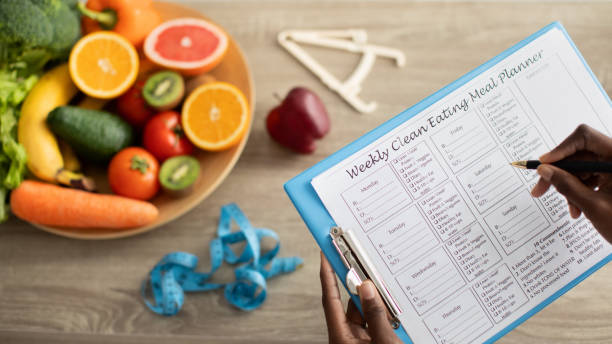
If you have a sweet tooth, these strategies for reducing cravings will help you regulate your blood sugar.
Type 2 diabetics know that carbohydrate and sugar consumption regulate blood glucose.
Limiting additional sugars is recommended by most healthy eating standards. However, sweet cravings might be particularly tough to conquer.
Here are some ways to curb sugar cravings and control diabetes.
Why Am I Craving Sugar?
Sugar cravings can be caused by a mix of biological, psychological, and environmental factors. Here’s a breakdown of the most common reasons:
1. Blood Sugar Swings
What happens: When your blood sugar drops (due to skipping meals, eating lots of refined carbs, or not getting enough protein), your body craves sugar for a quick energy boost.
2. Lack of Sleep
What happens: Poor sleep increases hunger hormones (like ghrelin) and reduces fullness hormones (like leptin), making you crave quick energy—like sugar.
3. Emotional or Stress Eating
What happens: Sugar triggers dopamine, the brain’s “feel-good” chemical. This makes it a go-to comfort food when you’re bored, stressed, sad, or anxious.
4. Nutrient Deficiencies
What happens: Low magnesium or chromium levels (which help regulate blood sugar and insulin) may lead to sugar cravings.
5. Habit or Mindless Eating
What happens: If you usually grab a sweet snack at the same time each day, your brain starts to expect it, even if you’re not truly hungry.
6. Too Many Refined Carbs
What happens: High-carb, low-nutrient meals (think white bread, sugary snacks, soda) cause sugar spikes and crashes, leading to even more cravings.
If your sugar cravings are frequent, intense, or feel out of control, it could be worth checking in with a registered dietitian or doctor, especially if it’s linked to fatigue, mood swings, or other symptoms.

How to Stop Sugar Cravings
1. Get Enough Protein
Protein-rich meals might help you feel full faster and longer. Protein boosts a gut hormone that makes you feel full and pleased.
To satisfy cravings, choose a protein smoothie instead of a sweet indulgence.
Concerned about portion size?
Based on your unique data, this calculator delivers protein consumption recommendations from the American Dietetic Association, the Centers for Disease Control and Prevention, and the World Health Organization.
- Plant-based proteins, including beans, hummus, lentils, almonds, and tofu fish and shellfish like salmon, flounder, crab, and scallops
- Turkey with chicken, cheese, and eggs
- Lamb, veal, pig, and beef
I propose substituting plain Greek yogurt for mayonnaise, cream cheese, and other creamy items to boost protein consumption. I advocate putting vanilla protein shakes in coffee, oatmeal, and dry cereal.
RELATED: 8 Low-Fat & Sugar-Free Food Swaps That Are Perfect For Summertime
2. Plan Your Meals
Organizing your meals for the day is essential, but you don’t need Instagram-worthy dishes or containers. This prevents midday vending machine or break room doughnut temptations.
Follow the half-plate rule. Half your plate should include leafy greens, one-quarter of lean protein, and one-quarter of carbohydrates.
Christa Gonzalez, RD, CNSC, suggests preparing meals to avoid consuming high-carbohydrate convenience items when hungry. Dietitians can help you plan meals.
3. Get More Fiber
Fiber regulates appetite and improves insulin sensitivity.
- Fiber-rich beans and legumes
- fresh produce, particularly with edible skins, seeds, and nuts
- brown rice, quinoa, and oats
Talk to your doctor about over-the-counter fiber pills if you still have trouble obtaining enough fiber. Avoid sweet gummies, which might hide sugars.
4. Splurge Sometimes
Food restriction may lead to binge eating. It’s well known that restricting food makes you crave it more.
Binge eating may happen when you consume a lot of food quickly. Consider having a few sugary treats a week.
NEDA.org is a resource that may assist you or someone you know with eating disorder symptoms.
RELATED: Summer Lights: Low-Fat & Sugar-Free Desserts
5. Drink Plenty Of Water
Well-hydrated people may eat less. US women should drink 2.7 liters (L) daily, while men should drink 3.7 L. About three of those trendy stainless-steel water bottles every day.
Limit full-sugar soft drinks and juices, which might contain hidden sugar.
As an alternative to water, there are several low-sugar or sugar-free drinks. In fact, the American Diabetes Association’s 2023 Standards of Care in Diabetes recommendations recommend low- and no-calorie sweetened drinks as alternatives to water.
6. Get Enough Sleep
Blood glucose swings and desires may rise with sleep loss. Studies demonstrate that less sleep and lower sleep quality increase sugar consumption.
Ensure your bedroom is dark, quiet, and cold to get seven or more hours of sleep every night.
7. Stay Active
Exercise helps manage diabetes. It may also curb your sweet tooth. Exercise, such as brisk walking, has been demonstrated to lower chocolate cravings.
8. Quit Cold Turkey
Regularly eating sweets makes you want more. Research shows that avoiding sweets eliminates cravings.
RELATED: 7 Most Sugary Drinks Of Summer
9. Don’t Keep It In The House
Reduce your home’s sweets. Keep sweets high in a cabinet and fruit and other low-sugar snacks visible if you live with people.
10. Practice Mindful Eating
Take time to reflect before eating. Are you bored? Anxious? Stressed? Sad? Hungry? Try drinking a glass of water or another low-sugar beverage to see if it helps. Thirst may often be confused with hunger instead of eating, exercising, or doing a hobby.
It’s hard to give up sweets. However, you must watch what you consume to control your blood sugar. Plan your meals, drink water, and get enough sleep and exercise. If you have a sumptuous dessert, don’t beat yourself up. If your diet is balanced, you’re OK.









